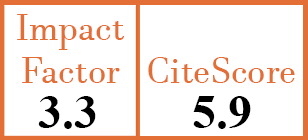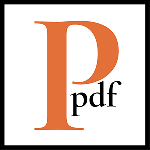Full Papers
The impact of first-line tumour necrosis factor inhibitor treatment on anti-infective use in patients with axial spondyloarthritis: a nationwide retrospective cohort study
H. Thorhallsdottir1, A.H. Bjornsson2, T.J. Love3, B. Gudbjornsson4
- Department of Medicine, Landspitali University Hospital of Iceland, Reykjavik, Iceland. hlinthorhallsdottir@gmail.com
- School of Health Science, University of Iceland, Reykjavik, Iceland; Department of Rheumatology, Skåne University Hospital, Lund, Sweden; and Centre for Rheumatology Research, Landspitali University Hospital of Iceland, Reykjavík, Iceland.
- School of Health Science, University of Iceland, Reykjavik; and Department of Science, Landspitali University Hospital of Iceland, Reykjavik, Iceland.
- chool of Health Science, University of Iceland, Reykjavik; and Centre for Rheumatology Research, Landspitali University Hospital of Iceland, Reykjavík, Iceland.
on behalf of ICEBIO
CER18389
Full Papers
Free to view
(click on article PDF icon to read the article)
PMID: 41042718 [PubMed]
Received: 28/11/2024
Accepted : 13/06/2025
In Press: 02/10/2025
Abstract
OBJECTIVES:
To investigate the use of anti-infective prescriptions (AIPs) in axial spondyloarthritis (axSpA) patients treated with tumour necrosis factor α inhibitors (TNFi) therapy and determine factors associated with increased risk of anti-infective use.
METHODS:
In this nationwide matched cohort study, we extracted information on all adult biologic-naive patients with axSpA initiating treatment with a TNFi in 2003-2018 from ICEBIO. Each patient was matched on age, sex, and calendar time to five individuals from the general population. AIPs were collected from nationwide registers two years before and after TNFi initiation. Prescription incidence rates (IR) were calculated, and multivariable analysis was conducted.
RESULTS:
The study identified data on 378 axSpA patients. The axSpA patients had higher IR per patient-year (py) of AIPs than comparators (1.12 (1.04–1.20) vs. 0.40 (0.38–0.42), p<0.001) before TNFi treatment. After TNFi initiation, the IR per py of AIP increased to 1.43 ((1.35–1.52), p<0.001), with a significant increase for antibiotics (1.04 (0.97–1.12) to 1.29 (1.21–1.38), p<0.001) and antivirals (0.03 (0.2–0.04) vs. 0.07 (0.06–0.1), p<0.001). Prior AIPs, female sex, and higher HAQ score were associated with increased AIPs after TNFi initiation, while age, smoking, and the use of glucocorticoids or methotrexate were not.
CONCLUSIONS:
Filled AIPs among axSpA patients increased after TNFi initiation in contrast to what has been documented in prior studies on severe infections. This indicates an increase in non-severe infections or a lower threshold for AIPs among physicians after treatment initiation. Furthermore, axSpA patients were prescribed more AIPs before TNFi treatment compared to the general population, suggesting elevated baseline infection risk.



